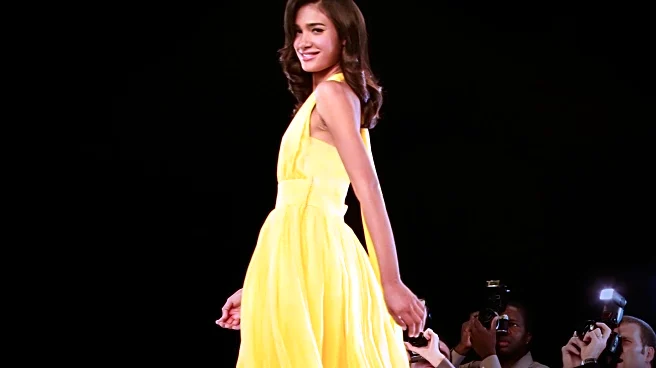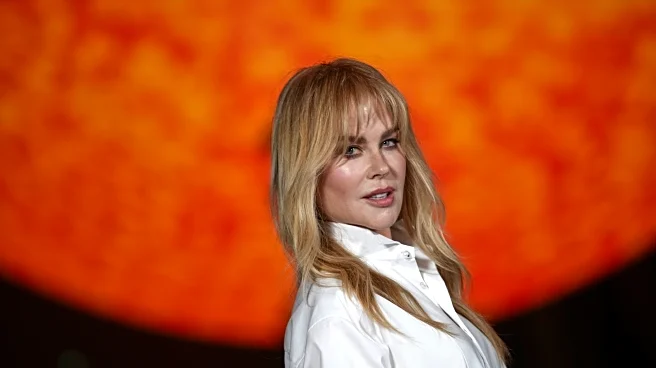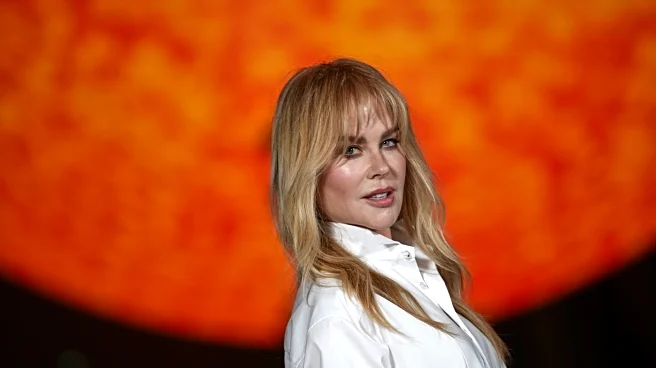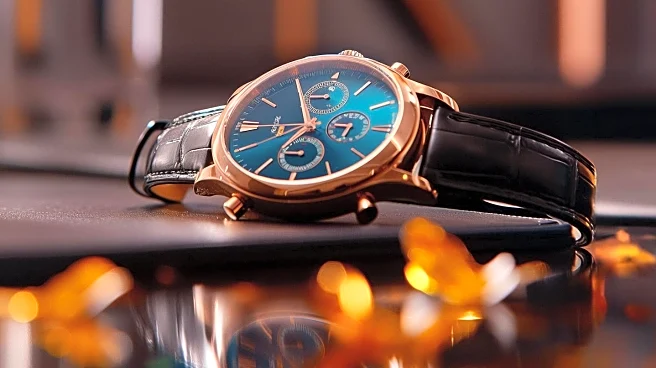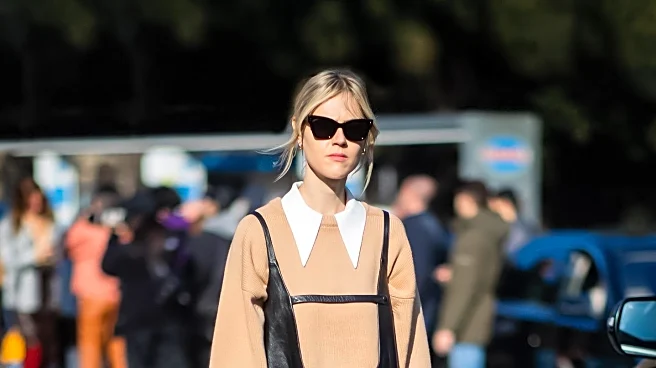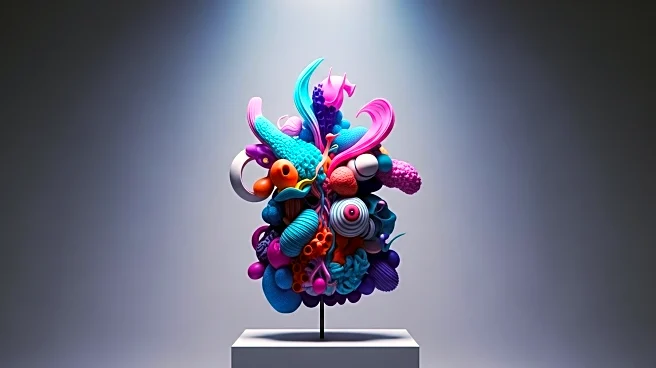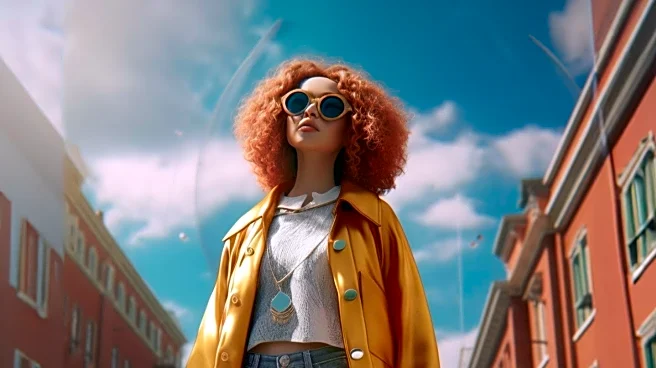What's Happening?
During the women's fashion weeks in Milan and Paris, several major fashion houses showcased men's designs alongside women's collections. This trend reflects a growing emphasis on gender fluidity in fashion, with designers like Valentino presenting men's clothes that challenge traditional gender norms. The collections included unconventional pieces such as sleeveless halter tops and see-through shirts, raising questions about the commercial viability of such designs. While some designers argue that men's and women's lines share enough DNA to be shown together, critics suggest that men's clothes often feel like an afterthought.
Why It's Important?
The inclusion of men's designs in women's fashion weeks highlights the evolving landscape of gender in fashion. As brands explore gender fluidity, they challenge traditional norms and expand the possibilities for self-expression through clothing. However, the commercial realities of fashion remain, as retailers may be hesitant to invest in designs that defy conventional gender expectations. This trend may influence future fashion shows and collections, as designers balance creativity with market demands. The conversation around gender in fashion reflects broader societal shifts towards inclusivity and diversity.
Beyond the Headlines
The trend of showcasing gender-fluid designs in fashion weeks may prompt discussions on the role of fashion in shaping cultural perceptions of gender. As designers push boundaries, they contribute to a broader dialogue on identity and self-expression. The reception of these collections may influence future fashion industry practices, encouraging brands to embrace diversity and challenge stereotypes. Additionally, the commercial success of gender-fluid designs could impact the industry's approach to marketing and consumer engagement.



